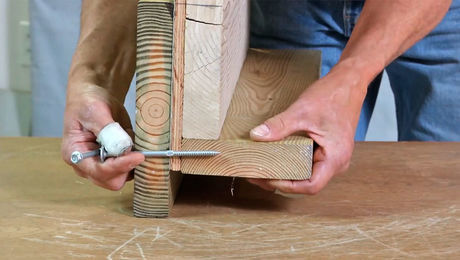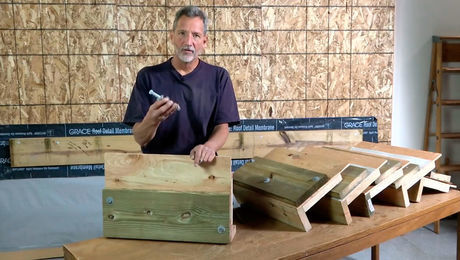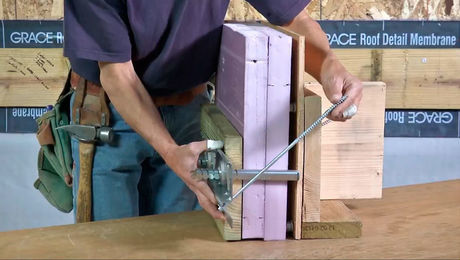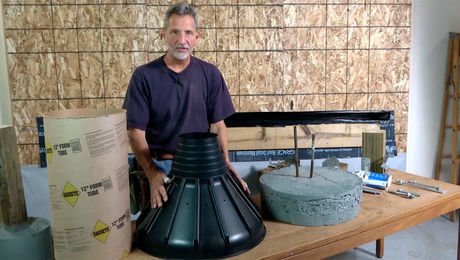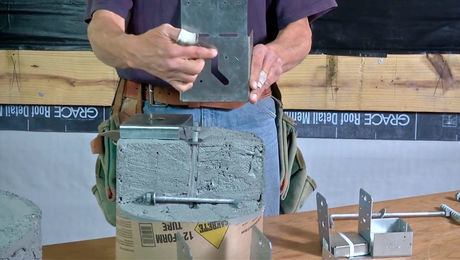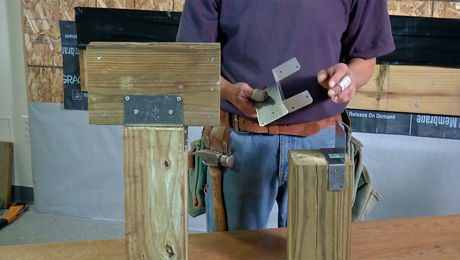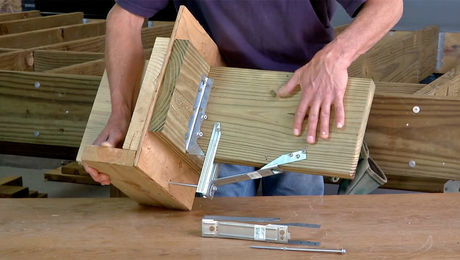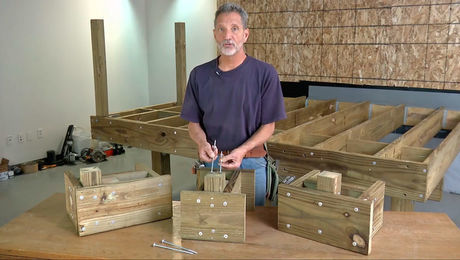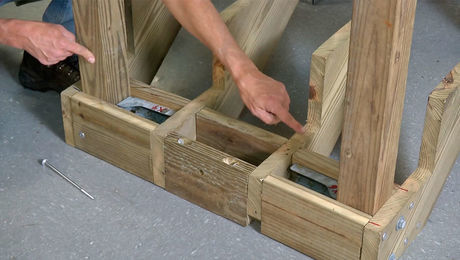Options for Fastening a Deck Ledger
Learn the pros, cons, and proper placement of ledger bolts, lags, and structural screws.
Jump to all the videos in this series
It’s surprisingly common to see deck ledgers that aren’t properly fastened, so we’ve put together an overview of what you will need to do the job right on your next deck build. There’s no one-size-fits-all solution, so you will have to collect some information first to match the construction details to the type of house and deck you will be working on in order to make safe, solid framing connections.
In order to select a ledger mounting system you’ll need to know four things:
- Rim joist material used to frame the floor system. That will require cutting a hole in the ceiling inside the house or a hole from the outside unless there’s an unfinished basement or crawlspace where you can view the rim board from the inside.
- The span of the deck joists from the ledger board to the beam supporting the joists. The beam may have the joists cantilevering over them or it may be a rim beam at the outside end of the deck.
- The live load on the deck. The IRC calls for decks to be designed to support a 40 psf live load. Check with your local building department though – some require higher live load capacities for decks.
- The ground snow load. If the ground snow load in your area is 40 psf or less then the live load capacity design can handle the snow. Decks in areas with snow loads exceeding 40 psf must be designed to handle the snow load. For more information see Making Sense of Deck Loads.
There are limitations to the ledger mounting systems profiled in the video.
- The rim board in the house must bear directly on the top plate of a wall or mudsill of a foundation. A deck ledger cannot be attached to the rim board of a cantilevered floor.
- The rim board must be solid sawn lumber or certain types of engineered rim board. The IRC’s deck ledger fastening table is the most restrictive. DCA-6 and proprietary screw manufacturers’ tables have a greater range of allowable rim board materials that a ledger can be attached to.
- No beam or girder can be attached to the ledger without a connection designed by an engineer. You may encounter this when there’s a chimney or bump-out section of the house floor cantilevering over the foundation or wall. You’d need to header around the chimney or bump-out and the beams (double or triple floor joists) supporting the header can’t be supported by the ledger.
We weren’t able to cover all of the possible deck ledger to house connection scenarios in the video like balloon frame houses, concrete or block foundations, and open web floor trusses, The references below will direct you to information in Fine Homebuilding articles and other guides where you can find supporting information some of those and other challenging connections. Be sure to verify your local building official will accept the prescriptive solutions provided in the articles and guides.
There are cases where you won’t be able to install a deck ledger, like in the case of a cantilevered floor, so you’ll have to build a free-standing deck that isn’t structurally attached to the house. Find more information about when and how you may need to build a free-stand deck.
Videos in the Series
-
How to Install and Flash a Deck Ledger, Start to Finish
-
Options for Fastening a Deck Ledger
-
Attach a Deck Ledger Over Brick, Foam, and Other Thick Claddings
-
Deck Footing Options
-
Options for Fastening Deck Posts to Footings
-
Options for Fastening Beams to Deck Posts
-
Installing Deck Joists
-
Lateral Load Deck Connector Options
-
Options for Fastening Deck Guardrails
-
Building Strong Deck Stairs

